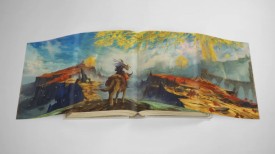Marjorie Senechal Talks About Novel on Dorothy Wrinch Calling Her A Beautiful Vision
Author Marjorie Senechal sits down to chat with Jacki Lyden, host of weekends on All Things Considered, to talk about her book, I Died for Beauty: Dorothy Wrinch and the Cultures of Science.
The book is a biography of the life of Dorothy Wrinch, a woman who remains unknown to people outside the world of science. Wrinch was the first woman to receive a doctorate of science from Oxford University in 1929 and thus, began her story that unfortunately is untold.
On Dorothy Wrinch and how remarkable she was:
"Well, her determination was certainly one thing. ... She was determined to be a mathematician. She worked her head off. Everyone considered her the biggest workaholic they had ever known, but at the same time she was vivacious and gregarious. She had a knack for making friends. Her best friend, Dora Black, said that she was, in fact, the most driven person who had the clearest sense of what she wanted to do of anybody."
On sharing a bond with Wrinch over The Grammar of Ornament
"This book is a book that was published in 1865. It's so heavy that you can hardly lift it up. It's 100 beautiful plates of ornaments, like wall paper, and rugs, and tiles on walls, and ceilings from all over the world and all different eras, and this had been complied in the 1860s by Owen Jones. ... These particular beautiful ornaments are analogous to the way atoms were arranged in crystals, and that's why we were fascinated."
On Wrinch's ideas and visions
"They had just discovered, they being the protein chemists, chemists in general, had just discovered that proteins were molecules. This is so taken for granted today that it is hard to imagine a time when they didn't understand that. When it became clear that they were molecules, meaning that there was a definite structure, that the atoms were in particular places ... then the question is, well, where are those places? And the one theory that had been proposed before was that it makes a long chain. ... She said, 'No, that that's not the way it is.' So, she proposed instead that the chains form rings, and the rings join together, and she came up with a model that looked like lace. It was absolutely beautiful, and then she would have the lace fold up, so as if you are making an origami cage."
On Linus Pauling's vicious attack on her theory
He thought it was perfectly fine to be that way. ... She had a beautiful vision that had excited many, many people - many, many scientists, many of them Nobel Prize winners - thinking that there must be something to what she was saying in her model because it explained things so well, so many of the properties that they wanted to have explanations for. ... Linus Pauling thought she was wrong because she didn't have the chemistry right. She was assuming there was a bond that he didn't think existed, even though it did, and so he just decided to do her in, it was literally that, and to march into this fray and to get rid of her by laughing her out of the profession. ... It just destroyed [her career].
© 2023 Books & Review All rights reserved.
Popular Now
1
Books to Read After 'Fourth Wing': Top Picks for Fantasy and Romantasy Fans

2
‘The Secret Public’ by Jon Savage Book Review: An Insightful Look Into the LGBTQ Influence

3
Stephanie Regalado's 'If They Only Knew' Column Is Now A Book, Unleashing 60 Anonymous True Stories to Empower Women

4
'No Wire Hangers' Scene That Almost Did Not Happen: New Book Reveals Faye Dunaway's Struggles

5
Rare First Edition of Aphra Behn's Novel 'Oroonoko' Discovered in Kent: A Historic Literary Find

Latest Stories
Book Reviews
‘The Secret Public’ by Jon Savage Book Review: An Insightful Look Into the LGBTQ Influence

Book News
Stephanie Regalado's 'If They Only Knew' Column Is Now A Book, Unleashing 60 Anonymous True Stories to Empower Women

Book News
'No Wire Hangers' Scene That Almost Did Not Happen: New Book Reveals Faye Dunaway's Struggles

Book Reviews
‘The Perfect Couple’ by Elin Hilderbrand Book Review: A Captivating Summer Mystery

Book News
New Book ‘The Franchise’ Reveals Penguins President Kyle Dubas’ ‘Biggest Mistake’ as Maple Leafs GM











